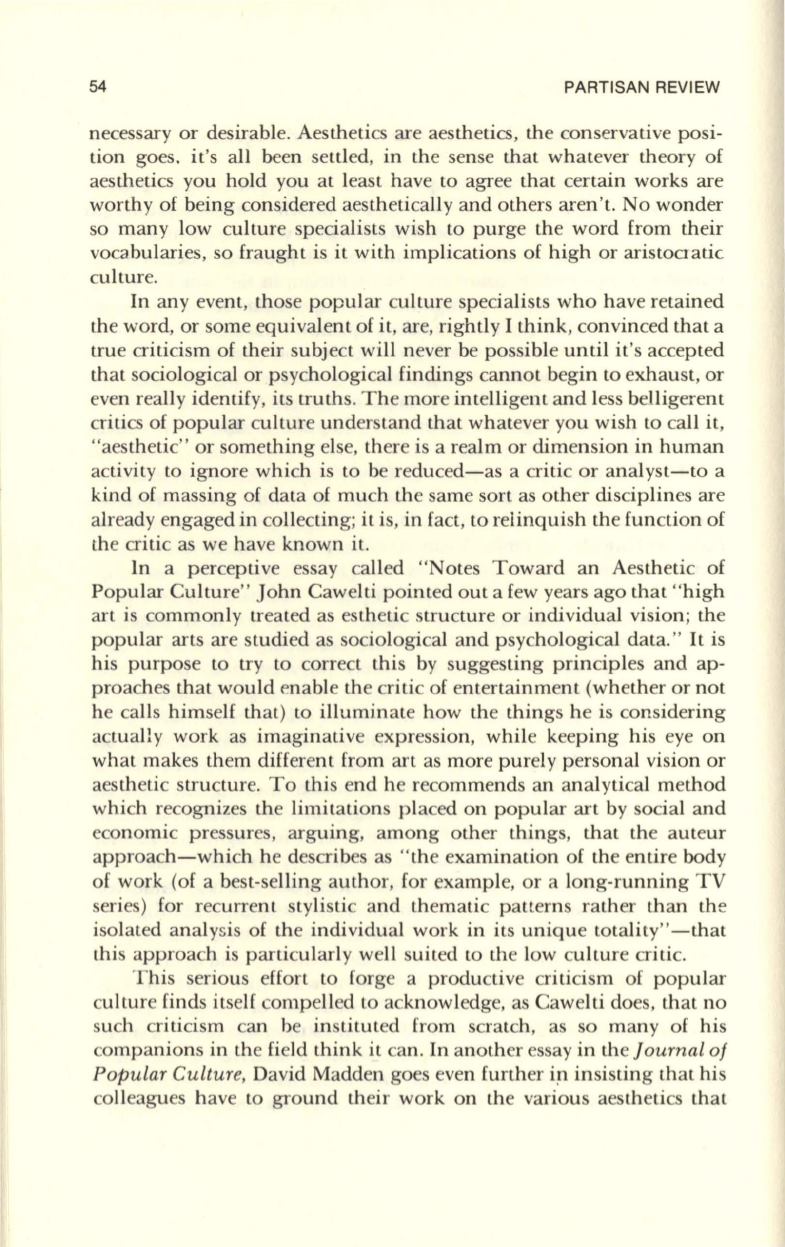
54
PARTISAN REVIEW
necessary or desirable. Aesthetics are aesthetics, the conservative posi–
tion goes, it's all been settled, in the sense that whatever theory of
aesthetics you hold you at least have to agree that certain works are
worthy of being considered aesthetically and others aren't. No wonder
so many low culture specialists wish to purge the word from their
vocabularies, so fraught is it with implications of high or aristocratic
culture.
In any event, those popular culture specialists who have retained
the word, or some equivalent of it, are, rightly I think, convinced that a
true criticism of their subject will never be possible until it's accepted
that sociological or psychological findings cannot begin to exhaust, or
even really identify, its truths. The more intelligent and less belligerent
critics of popular culture understand that whatever you wish to call it,
"aesthetic" or something else, there is a realm or dimension in human
activity to ignore which is to be reduced-as a critic or analyst-to a
kind of massing of data of much the same sort as other disciplines are
already engaged in collecting; it is, in fact, to reiinquish the function of
the critic as we have known it.
In a perceptive essay called "Notes Toward an Aesthetic of
Popular Culture" John Cawelti pointed out a few years ago that "high
art is commonly treated as esthetic structure or individual vision; the
popular arts are studied as sociological and psychological data."
It
is
his purpose to try to correct this by suggesting principles and ap–
proaches that would enable the critic of entertainment (whether or not
he calls himself that)
to
illuminate how the things he is considering
actually work as imaginative expression, while keeping his eye on
what makes them different from art as more purely personal vision or
aesthetic structure. To this end he recommends an analytical method
which recognizes the limitations placed on popular art by social and
economic pressures, arguing, among other things, that the auteur
approach-which he describes as "the examination of the entire body
of work (of a best-selling author, for example, or a long-running TV
series) for recurrent stylistic and thematic patterns rather than the
isolated analysis of the individual work in its unique totality" -that
this approach is particularly well suited to the low culture critic.
This serious effort to forge a productive criticism of popular
culture finds itself compelled to acknowledge, as Cawelti does, that no
such criticism can be instituted from scratch, as so many of his
companions in the field think it can. In another essay in the
Journal of
Popular Culture,
David Madden goes even further ip. insisting that his
colleagues have to ground their work on the various aesthetics that


